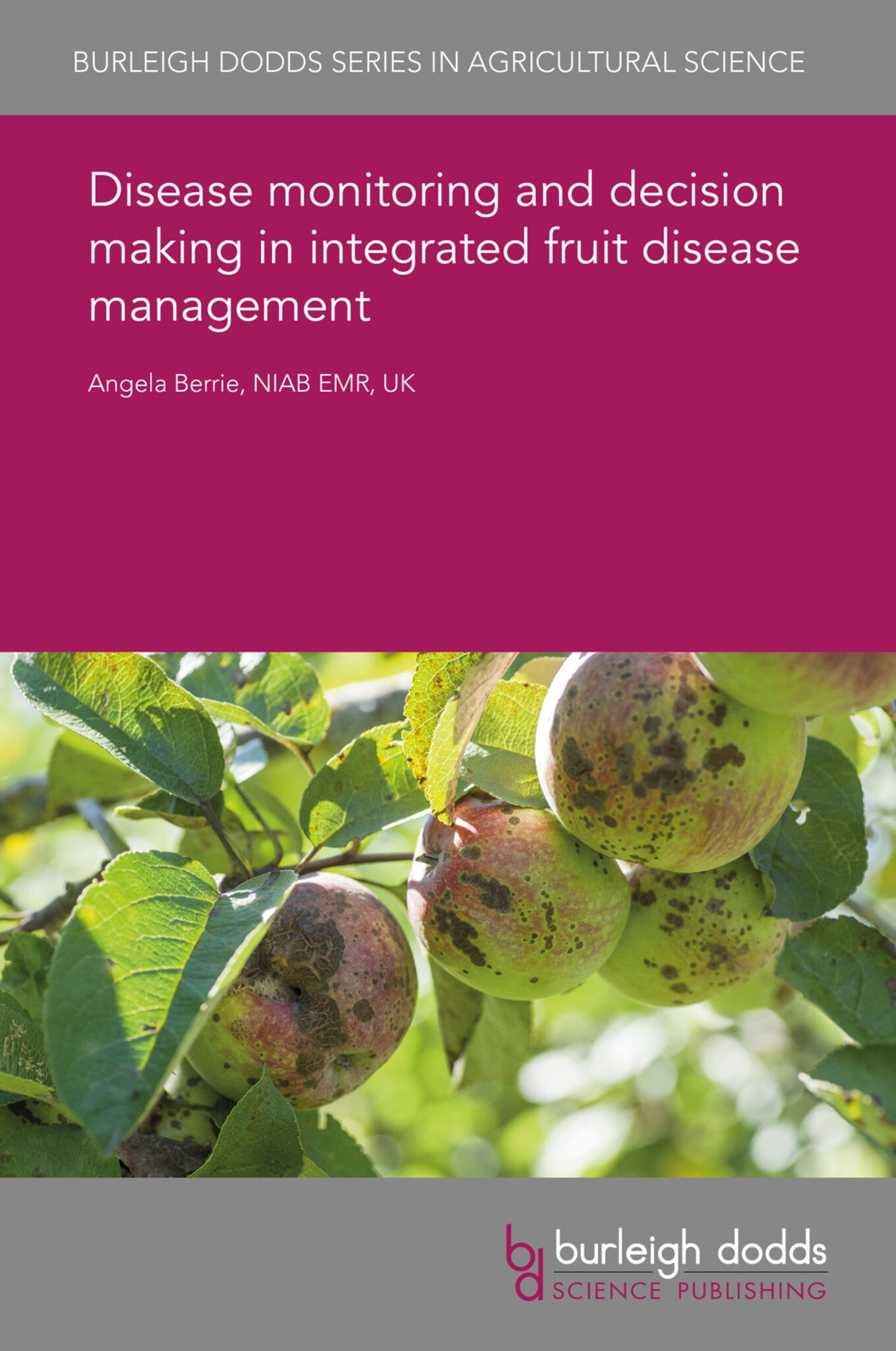We're sorry. An error has occurred
Please cancel or retry.
Disease monitoring and decision making in integrated fruit disease management
Regular price
£25.00
Sale price
£25.00
Regular price
£0.00
Unit price
/
per
Sale
Sold out
Re-stocking soon
Regular inspection of fruit crops for diseases is a vital part of integrated disease management. Combining this information with that generated from disease warning systems can play a significant r...
Read More

Some error occured while loading the Quick View. Please close the Quick View and try reloading the page.
Couldn't load pickup availability
- Format:
-
09 September 2019

Regular inspection of fruit crops for diseases is a vital part of integrated disease management. Combining this information with that generated from disease warning systems can play a significant role in achieving perfect fruit with minimal use of fungicides. This chapter includes general discussions on fruit disease monitoring, disease warning systems and decision making; it then uses examples of specific diseases in apple and pear to illustrate the role of both orchard monitoring and disease warning systems in integrated disease management. The following diseases are covered: apple scab, apple powdery mildew, European apple canker, sooty blotch, fly speck, fire blight and storage rots. The examples given demonstrate how in current ‘best practice’ orchard monitoring and, where appropriate, disease warning systems can be integrated to make decisions on treatment to control the diseases to produce quality fruit with minimum input of fungicides. The use of future technologies such as smart spore traps, drones and orchard scanners are also discussed.

Price: £25.00
Publisher: Burleigh Dodds Science Publishing
Imprint: Burleigh Dodds Science Publishing
Series: Burleigh Dodds Series in Agricultural Science
Publication Date:
09 September 2019
ISBN: 9781838799045
Format: eBook
BISACs:
SCIENCE / Life Sciences / Horticulture, Commercial horticulture, TECHNOLOGY & ENGINEERING / Agriculture / Agronomy / Crop Science, TECHNOLOGY & ENGINEERING / Pest Control, Sustainable agriculture, Pest control / plant diseases

1 Introduction 2 General considerations 3 Apple disease examples 4 Conclusion and future trends 5 Where to look for further information 6 References



